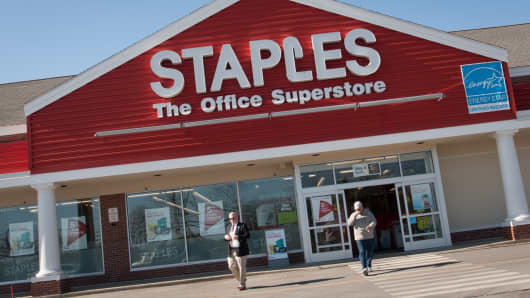1 seriously alarming stat on Staples
- Free cash flow 2012: $870 million
- Free cash flow 2009: $1.8 billion
7 Explanations on why Staples is doomed
1. The stores lack an in-store experience that connects them to the huge Staples.com online store. Macy's, Best Buy, and Home Depot offer far superior interconnected experiences.
2. The back of the store is wildly unproductive, but still being paid for each month. Staples should not only be exiting U.S. stores more aggressively, but repurposing them so that they generate consistent profitable sales. For example, why not convert the back of Staples stores (which currently hold chairs and large open pockets of air) to small-business workstations that could be rented daily/monthly, while also keeping people in the store spending at the UPS copy station?
3.Consistent MIA product displays discourages a sale and erodes confidence in the brand. Not having attention to detail is not what a retailer badly in search of sales needs.
4. Inventory dollars are being invested in merchandise such as Tide Pods, ice melt, and paper towels. In looking at the sales and traffic trends, these initiatives are not working, explaining the constraints of the office supply business model.
5. International is a low margin business that is now operating at sustained losses. It must be completely exited ASAP, perhaps with funds being used to repurchase shares ($1.1 billion in total between 2012 and 2011).
6. Persistent out of stocks in go-to items like paper and pens is unacceptable, and sends consumers to Target and Wal-Mart which have both done better jobs in office supplies.
7. Staples offers a woeful experience in Apple products, in terms of customer service and range of assortment, relative to Wal-Mart and Best Buy. I don't see this changing anytime soon, disappointing since all big-box retailers should play nice with a company continuing to reinvent the wheel. Imagine how Staples' electronics section (carrying declining in usage PCs) will fare when Google sets up shop inside Best Buy and Samsung continues to roll out its easy on the shops.
— By Brian Sozzi
Brian Sozzi is CEO and chief equities strategist of Belus Capital Advisors. Follow him on Twitter @BrianSozzi.
Disclosure: I, nor my firm, own shares in Staples or any of the companies mentioned. Belus Capital Advisors presently rates Best Buy at a "buy" rating.


